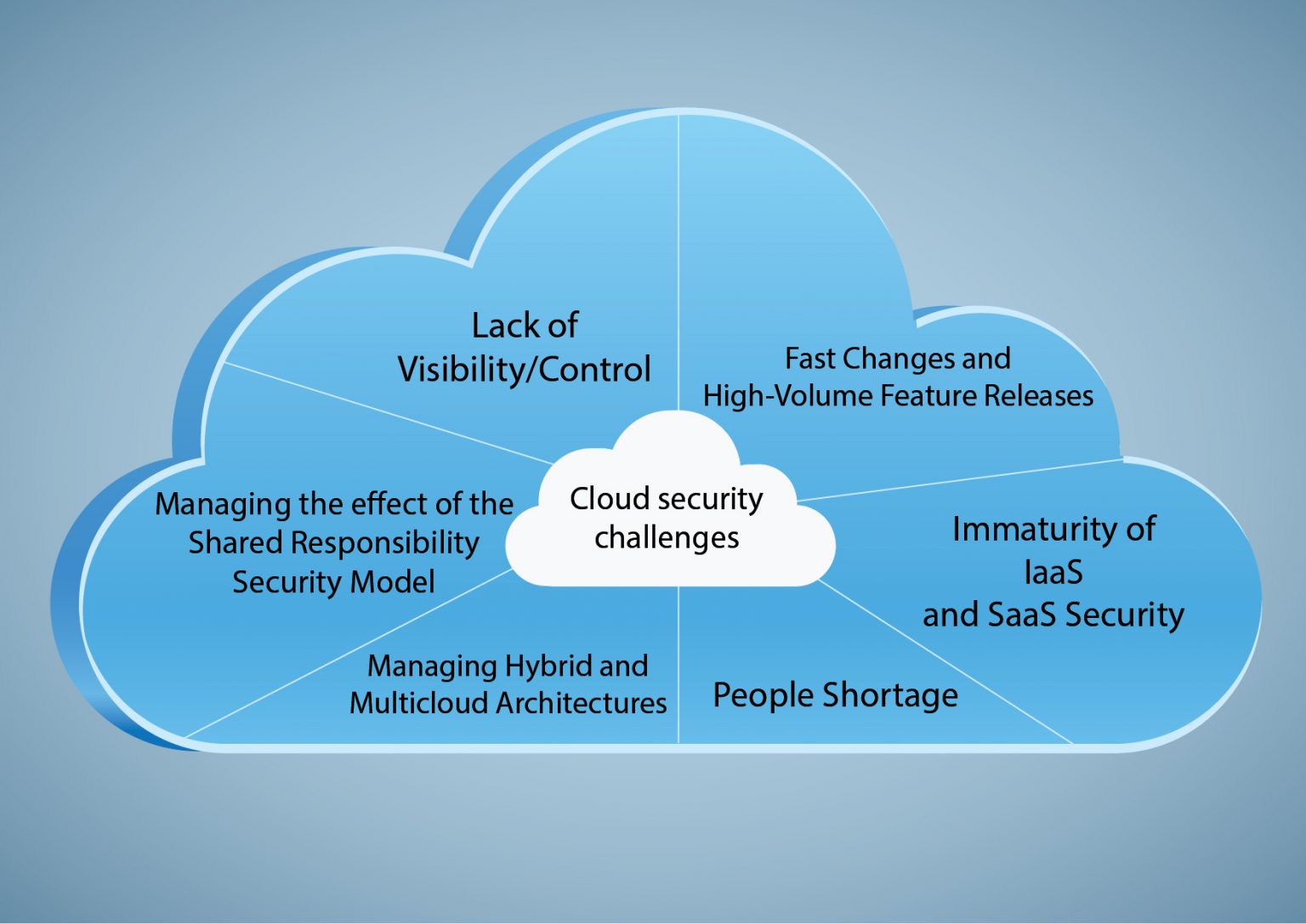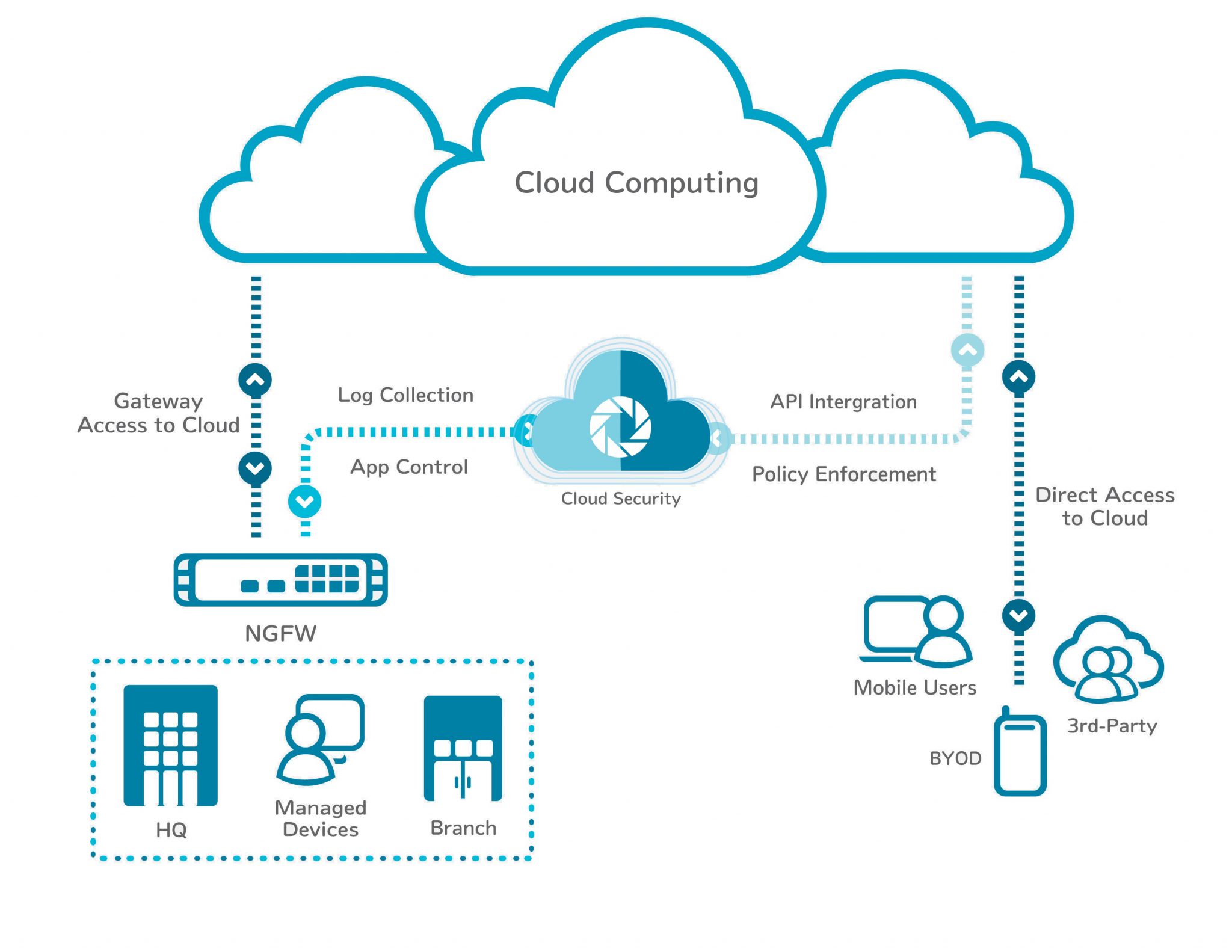The Significance of Robust Data Security in Cloud Environments
In today’s digital age, businesses of all sizes and industries rely on cloud computing to store, process, and manage vast amounts of sensitive data. While cloud environments offer numerous benefits, such as scalability, flexibility, and cost savings, they also introduce new security challenges that can put data at risk. Ensuring data security in cloud environments has become a top priority for businesses, as data breaches, unauthorized access, and data loss can result in significant financial, reputational, and regulatory consequences.
Implementing robust data security measures in cloud environments is essential for protecting sensitive data and maintaining customer trust. By adopting best practices and leveraging advanced technologies, businesses can mitigate security risks and ensure compliance with various regulatory requirements, such as the General Data Protection Regulation (GDPR), the Health Insurance Portability and Accountability Act (HIPAA), and the Payment Card Industry Data Security Standard (PCI-DSS).
The benefits of implementing robust data security measures in cloud environments extend beyond regulatory compliance and customer trust. By reducing the risk of data breaches and data loss, businesses can minimize financial losses, avoid legal liabilities, and maintain business continuity. Moreover, by ensuring data security in cloud environments, businesses can unlock the full potential of cloud computing and gain a competitive advantage in their respective markets.
In summary, ensuring data security in cloud environments is critical for businesses that rely on cloud computing to store, process, and manage sensitive data. By implementing robust data security measures, businesses can protect sensitive data, maintain customer trust, minimize financial losses, and gain a competitive advantage. In the following sections, we will discuss various aspects of cloud security, including cloud security models, access control policies, data encryption, monitoring and logging, disaster recovery and business continuity strategies, compliance and regulatory requirements, and emerging trends and future directions in cloud security.

Understanding Cloud Security Models: A Comparative Analysis
As businesses continue to adopt cloud computing to store, process, and manage sensitive data, understanding cloud security models has become crucial for ensuring data protection. Cloud security models refer to the distribution of security responsibilities between cloud service providers (CSPs) and cloud customers. Different cloud security models, such as Infrastructure as a Service (IaaS), Platform as a Service (PaaS), and Software as a Service (SaaS), have varying levels of responsibility and impact on data security.
In the IaaS model, the CSP provides virtualized computing resources, such as servers, storage, and networking, while the cloud customer is responsible for managing the operating systems, applications, and data. This model offers the most flexibility and control to the cloud customer but also requires the most effort in terms of security management. The cloud customer must implement security measures, such as firewalls, intrusion detection/prevention systems, and antivirus software, to protect their data and applications.
In the PaaS model, the CSP provides a platform for developing, running, and managing applications, while the cloud customer is responsible for managing the data and applications. The CSP handles the underlying infrastructure, including the operating systems, virtualization, and networking. This model offers a balance between flexibility and security management, as the CSP provides some security measures, such as patching and updating the underlying infrastructure, while the cloud customer is responsible for securing their data and applications.
In the SaaS model, the CSP provides a complete software solution, including the infrastructure, platform, and application, while the cloud customer is responsible for managing the data. The CSP handles all aspects of security management, including infrastructure, platform, and application security. This model offers the least flexibility and control to the cloud customer but also requires the least effort in terms of security management. The cloud customer must trust the CSP’s security measures and practices to protect their data.
Regardless of the cloud security model, both the CSP and the cloud customer have responsibilities in ensuring data protection. The CSP must provide a secure and reliable infrastructure, follow best practices in security management, and comply with various regulatory requirements. The cloud customer must configure the security settings correctly, follow best practices in security management, and comply with various regulatory requirements. By understanding the cloud security models and their respective responsibilities, businesses can ensure data security in cloud environments and mitigate security risks.
In summary, understanding cloud security models is essential for ensuring data protection in cloud environments. The IaaS, PaaS, and SaaS models have varying levels of responsibility and impact on data security. Both the CSP and the cloud customer have responsibilities in ensuring data protection. By understanding the cloud security models and following best practices in security management, businesses can mitigate security risks and maintain data security in cloud environments.

Implementing Strong Access Control Policies
Data security in cloud environments is a critical concern for businesses, and implementing strong access control policies is a crucial component of a comprehensive cloud security strategy. Access control policies regulate who can access what data and resources in cloud environments, addressing the growing concerns of businesses regarding data breaches, unauthorized access, and data loss. By implementing robust access control mechanisms, such as Role-Based Access Control (RBAC), Identity and Access Management (IAM), and Multi-Factor Authentication (MFA), businesses can ensure regulatory compliance, enhance customer trust, and reduce financial risks.
RBAC is an access control mechanism that restricts system access to authorized users based on their roles within an organization. RBAC simplifies access management by assigning permissions to roles, rather than individual users, and enables businesses to manage access to sensitive data and resources more efficiently. For example, an organization can assign the role of “data analyst” to a group of users, providing them with access to specific data sets and analytical tools, while restricting access to other resources.
IAM is a cloud security service that enables businesses to manage user identities and access to cloud resources. IAM allows businesses to create and manage users, groups, and permissions, and provides a centralized view of access controls across cloud environments. By implementing IAM, businesses can ensure that only authorized users have access to sensitive data and resources, reducing the risk of data breaches and unauthorized access.
MFA is a security mechanism that requires users to provide two or more authentication factors to access cloud resources. MFA enhances access security by adding an additional layer of authentication, such as a fingerprint, facial recognition, or a one-time code sent to a mobile device. By implementing MFA, businesses can reduce the risk of password-based attacks and ensure that only authorized users have access to sensitive data and resources.
Popular cloud platforms, such as Amazon Web Services (AWS), Microsoft Azure, and Google Cloud Platform (GCP), provide various access control mechanisms, such as RBAC, IAM, and MFA. For example, AWS IAM enables businesses to create and manage users, groups, and permissions, and provides a centralized view of access controls across AWS environments. Azure Active Directory (Azure AD) is a cloud-based identity and access management service that provides IAM and MFA capabilities for Azure environments. GCP Identity and Access Management (IAM) enables businesses to manage access to GCP resources, such as Compute Engine, Cloud Storage, and BigQuery, based on user roles and permissions.
To ensure data security in cloud environments, businesses should follow best practices for configuring access controls. For example, businesses should implement the principle of least privilege, granting users the minimum permissions necessary to perform their job functions. Businesses should also regularly review and audit access controls, ensuring that only authorized users have access to sensitive data and resources. Additionally, businesses should implement MFA for all users, reducing the risk of password-based attacks and ensuring that only authorized users have access to cloud resources.
In summary, implementing strong access control policies is a critical component of a comprehensive cloud security strategy. By implementing access control mechanisms, such as RBAC, IAM, and MFA, businesses can ensure regulatory compliance, enhance customer trust, and reduce financial risks. Popular cloud platforms, such as AWS, Azure, and GCP, provide various access control mechanisms, and businesses should follow best practices for configuring access controls to ensure data security in cloud environments.

How to Secure Data in Transit and at Rest
Data security in cloud environments is a critical concern for businesses, and securing data in transit and at rest is a crucial component of a comprehensive cloud security strategy. Data in transit refers to data that is being transferred between two endpoints, such as from a user’s device to a cloud server. Data at rest, on the other hand, refers to data that is stored in a static location, such as in a database or file system.
Securing data in transit is essential for preventing data breaches and unauthorized access. One common technique for securing data in transit is encryption, which involves converting data into a code that can only be accessed with a decryption key. There are two main types of encryption techniques: symmetric and asymmetric encryption. Symmetric encryption uses the same key for encryption and decryption, while asymmetric encryption uses different keys for encryption and decryption. For example, Secure Sockets Layer (SSL) and Transport Layer Security (TLS) are common symmetric encryption protocols used for securing data in transit.
Securing data at rest is equally important for preventing data breaches and unauthorized access. One common technique for securing data at rest is encryption, which involves converting data into a code that can only be accessed with a decryption key. Key management is a critical component of data encryption, as it involves managing the encryption keys used to secure the data. Popular cloud platforms, such as Amazon Web Services (AWS), Microsoft Azure, and Google Cloud Platform (GCP), provide various encryption and key management mechanisms for securing data at rest.
For example, AWS provides several encryption and key management mechanisms, such as AWS Key Management Service (KMS), AWS CloudHSM, and AWS Encryption SDK. Azure provides several encryption and key management mechanisms, such as Azure Key Vault, Azure Disk Encryption, and Azure Storage Service Encryption. GCP provides several encryption and key management mechanisms, such as Google Cloud KMS, Google Cloud HSM, and Google Cloud Storage encryption.
To ensure data security in cloud environments, businesses should follow best practices for securing data in transit and at rest. For example, businesses should implement encryption for all data in transit and at rest, using industry-standard encryption protocols and algorithms. Businesses should also implement key management best practices, such as regularly rotating encryption keys, restricting access to encryption keys, and monitoring encryption key usage.
Additionally, businesses should regularly review and audit their encryption and key management mechanisms, ensuring that only authorized users have access to encrypted data and encryption keys. Businesses should also implement Multi-Factor Authentication (MFA) for all users, reducing the risk of password-based attacks and ensuring that only authorized users have access to encrypted data and encryption keys.
In summary, securing data in transit and at rest is a critical component of a comprehensive cloud security strategy. By implementing encryption and key management mechanisms, businesses can ensure regulatory compliance, enhance customer trust, and reduce financial risks. Popular cloud platforms, such as AWS, Azure, and GCP, provide various encryption and key management mechanisms, and businesses should follow best practices for securing data in transit and at rest to ensure data security in cloud environments.

Monitoring and Logging: Detecting and Responding to Security Threats
Cloud environments generate vast amounts of data, including logs and monitoring data, which can be used to detect and respond to security threats. Monitoring and logging activities in cloud environments are critical for ensuring data security and regulatory compliance. In this section, we will discuss the importance of monitoring and logging activities in cloud environments and describe various monitoring and logging tools and services provided by popular cloud platforms.
Monitoring and logging activities in cloud environments involve collecting, analyzing, and storing data related to system and user activities. This data can be used to detect anomalies, identify security threats, and investigate security incidents. Monitoring and logging activities can also help businesses demonstrate regulatory compliance and provide evidence in case of a security incident.
Popular cloud platforms, such as Amazon Web Services (AWS), Microsoft Azure, and Google Cloud Platform (GCP), provide various monitoring and logging tools and services. For example, AWS provides CloudTrail, CloudWatch, and Config, which can be used to monitor and log user and system activities, application performance, and configuration changes. Azure provides Azure Monitor, Azure Security Center, and Azure Log Analytics, which can be used to monitor and log user and system activities, application performance, and security events. GCP provides Stackdriver, which can be used to monitor and log user and system activities, application performance, and security events.
To ensure data security in cloud environments, businesses should implement monitoring and logging best practices. For example, businesses should enable monitoring and logging for all cloud resources, including virtual machines, databases, and storage services. Businesses should also configure monitoring and logging settings to collect and store data related to security events, such as login failures, access denied, and configuration changes. Additionally, businesses should regularly review and analyze monitoring and logging data to detect and respond to security threats.
To detect security threats, businesses should implement anomaly detection and threat intelligence mechanisms. Anomaly detection involves identifying unusual patterns or behaviors in monitoring and logging data, while threat intelligence involves collecting and analyzing data related to known security threats. Popular cloud platforms provide various anomaly detection and threat intelligence mechanisms, such as AWS GuardDuty, Azure Security Center, and GCP Security Command Center.
To respond to security threats, businesses should implement incident response plans and procedures. Incident response plans should include procedures for investigating security incidents, containing and eradicating security threats, and restoring normal operations. Popular cloud platforms provide various incident response tools and services, such as AWS Incident Manager, Azure Security Center, and GCP Security Command Center.
In summary, monitoring and logging activities are critical for detecting and responding to security threats in cloud environments. Popular cloud platforms provide various monitoring and logging tools and services, and businesses should implement monitoring and logging best practices, including enabling monitoring and logging for all cloud resources, configuring monitoring and logging settings to collect and store data related to security events, and regularly reviewing and analyzing monitoring and logging data. Additionally, businesses should implement anomaly detection and threat intelligence mechanisms and incident response plans and procedures to respond to security threats in cloud environments.

Implementing Disaster Recovery and Business Continuity Strategies
In today’s digital age, ensuring data security in cloud environments is of paramount importance for businesses. The growing concerns of data breaches, unauthorized access, and data loss have made it essential for organizations to implement robust security measures. By doing so, they can ensure regulatory compliance, enhance customer trust, and reduce financial risks. This article focuses on the significance of implementing disaster recovery and business continuity strategies in cloud environments.
Disaster recovery and business continuity are critical components of a comprehensive cloud security strategy. Disaster recovery refers to the process of restoring business operations and IT infrastructure after a catastrophic event, while business continuity ensures that essential functions continue during and after a disaster. Both concepts are crucial for maintaining data availability, integrity, and confidentiality in cloud environments.
Cloud service providers offer various disaster recovery and business continuity strategies to ensure data protection. These strategies include backup and restore, replication, and failover. Backup and restore involve creating copies of data and applications and storing them in a secure location. Replication involves creating duplicate copies of data and applications in real-time, while failover involves switching to a secondary system in case of a primary system failure.
When implementing disaster recovery and business continuity strategies, it is essential to consider the service level agreement (SLA) with the cloud service provider. The SLA should outline the provider’s responsibilities in case of a disaster and the expected recovery time objective (RTO) and recovery point objective (RPO). The RTO refers to the target time within which business operations must be restored, while the RPO refers to the maximum tolerable period in which data might be lost due to a major incident.
Best practices for implementing disaster recovery and business continuity strategies in cloud environments include:
- Regularly testing and updating the disaster recovery and business continuity plans.
- Implementing multi-factor authentication and access controls to prevent unauthorized access.
- Encrypting data both in transit and at rest using advanced encryption standards.
- Using cloud-based monitoring and logging tools to detect and respond to security threats.
- Implementing a backup and disaster recovery solution that aligns with the organization’s RTO and RPO.
- Regularly reviewing compliance and regulatory requirements and ensuring that the cloud environment meets these standards.
In conclusion, implementing disaster recovery and business continuity strategies is crucial for ensuring data security in cloud environments. By following best practices and working with a trusted cloud service provider, organizations can maintain data availability, integrity, and confidentiality, even in the face of a disaster. As businesses continue to rely on cloud services for their critical operations, the importance of disaster recovery and business continuity will only continue to grow.
Addressing Compliance and Regulatory Requirements in Cloud Environments
In today’s digital age, ensuring data security in cloud environments has become a top priority for businesses. With the increasing adoption of cloud services, organizations must address compliance and regulatory requirements to avoid legal and financial penalties. Compliance standards, such as GDPR, HIPAA, and PCI-DSS, have a significant impact on cloud security and require organizations to implement robust security measures.
GDPR (General Data Protection Regulation) is a regulation in EU law that focuses on data protection and privacy in the European Union and the European Economic Area. GDPR applies to all companies that process the personal data of people residing in the EU, regardless of the company’s location. GDPR requires organizations to obtain explicit consent from individuals before collecting and processing their personal data. It also mandates that organizations implement appropriate technical and organizational measures to protect personal data against accidental or unlawful destruction, loss, alteration, unauthorized disclosure, or access.
HIPAA (Health Insurance Portability and Accountability Act) is a US law that provides data privacy and security provisions for safeguarding medical information. HIPAA applies to healthcare providers, health plans, and healthcare clearinghouses. HIPAA requires organizations to implement physical, technical, and administrative safeguards to protect electronic protected health information (ePHI) against unauthorized access, use, or disclosure. It also mandates that organizations implement a breach notification policy in case of a security breach.
PCI-DSS (Payment Card Industry Data Security Standard) is a set of security standards designed to ensure that all companies that accept, process, store, or transmit credit card information maintain a secure environment. PCI-DSS applies to any organization that stores, processes, or transmits cardholder data. PCI-DSS requires organizations to implement firewalls, antivirus software, and access controls to protect cardholder data. It also mandates that organizations implement a vulnerability management program and regularly monitor and test their networks to detect and respond to security threats.
To achieve compliance in cloud environments, organizations must work closely with their cloud service providers. Cloud service providers must demonstrate their compliance with relevant regulations and provide transparency into their security measures. Organizations must also implement appropriate access controls, encryption, and monitoring and logging tools to protect their data in the cloud. It is essential to regularly review and update the organization’s compliance and regulatory requirements and ensure that the cloud environment meets these standards.
Best practices for achieving compliance in cloud environments include:
- Regularly reviewing and updating the organization’s compliance and regulatory requirements.
- Working closely with the cloud service provider to ensure compliance with relevant regulations.
- Implementing appropriate access controls, encryption, and monitoring and logging tools to protect data in the cloud.
- Regularly testing and monitoring the cloud environment for vulnerabilities and security threats.
- Implementing a breach notification policy in case of a security breach.
In conclusion, addressing compliance and regulatory requirements is crucial for ensuring data security in cloud environments. By following best practices and working closely with cloud service providers, organizations can maintain compliance with relevant regulations and protect their data in the cloud. As businesses continue to rely on cloud services for their critical operations, the importance of compliance and regulatory requirements will only continue to grow.

Emerging Trends and Future Directions in Cloud Security
As cloud computing continues to evolve, so do the security challenges and solutions associated with it. Ensuring data security in cloud environments is an ongoing process that requires organizations to stay up-to-date with the latest trends and best practices. In this section, we will explore some of the emerging trends and future directions in cloud security, including artificial intelligence, machine learning, and blockchain.
Artificial Intelligence (AI) and Machine Learning (ML)
AI and ML are becoming increasingly important in cloud security, as they can help detect and respond to security threats in real-time. By analyzing large amounts of data, AI and ML algorithms can identify patterns and anomalies that may indicate a security breach. For example, AI and ML can be used to detect unusual network traffic, identify malware, and prevent unauthorized access.
However, AI and ML are not without their limitations. They require large amounts of data to be effective, and they can be vulnerable to adversarial attacks. Therefore, it is essential to implement robust data governance and security measures to ensure that AI and ML models are accurate, reliable, and secure.
Blockchain
Blockchain is a decentralized and distributed digital ledger technology that can enhance cloud security by providing a secure and transparent way to store and share data. By using cryptography and consensus algorithms, blockchain can prevent unauthorized access, ensure data integrity, and provide an immutable record of transactions.
Blockchain can be used in various cloud security applications, such as identity and access management, data privacy, and supply chain management. However, blockchain is still a relatively new technology, and it faces several challenges, such as scalability, interoperability, and regulatory compliance.
Best Practices for Implementing Emerging Technologies in Cloud Environments
To ensure the successful implementation of emerging technologies in cloud environments, organizations should follow these best practices:
- Conduct a thorough risk assessment and identify potential security threats and vulnerabilities.
- Implement robust data governance and security measures to ensure the accuracy, reliability, and confidentiality of data.
- Use encryption, access controls, and multi-factor authentication to protect data and prevent unauthorized access.
- Regularly monitor and audit the cloud environment for security threats and vulnerabilities.
- Provide training and awareness programs to educate employees about the risks and best practices associated with emerging technologies.
In conclusion, AI, ML, and blockchain are promising technologies that can enhance cloud security and address some of the challenges associated with it. However, they require careful planning, implementation, and management to ensure their effectiveness and security. By following best practices and staying up-to-date with the latest trends and best practices, organizations can ensure the security and integrity of their cloud environments and protect their data from emerging threats.

